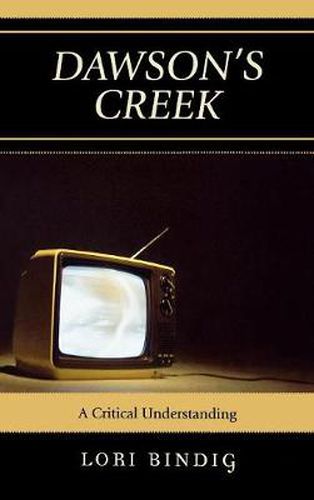Readings Newsletter
Become a Readings Member to make your shopping experience even easier.
Sign in or sign up for free!
You’re not far away from qualifying for FREE standard shipping within Australia
You’ve qualified for FREE standard shipping within Australia
The cart is loading…






Dawson’s Creek: A Critical Understanding provides a textual analysis of the WB’s hit teen drama that ran from 1998 to 2003. Author Lori Bindig analyzes episodes of Dawson’s Creek as a set of media texts that blur the boundaries between hegemonic and counter-hegemonic content. Exploring the ideology encoded within Dawson’s Creek from a feminist cultural studies perspective, Bindig examines gender, race, class, sexuality, and consumerism as it is presented in the show. The depiction of each of these five ideological concepts is discussed beyond the framework of the series and put into a larger social context, allowing a discussion of the potential ramifications of the television program. This book suggests that although Dawson’s Creek includes counter-hegemonic story lines, ultimately the political-economic realities of the current media system undercuts the oppositional content and frames the program as hegemonic. Nevertheless, Dawson’s Creek is a valuable tool in navigating the ongoing struggle against social inequality, illustrating how far society has come and how far it has yet to go.
$9.00 standard shipping within Australia
FREE standard shipping within Australia for orders over $100.00
Express & International shipping calculated at checkout
Dawson’s Creek: A Critical Understanding provides a textual analysis of the WB’s hit teen drama that ran from 1998 to 2003. Author Lori Bindig analyzes episodes of Dawson’s Creek as a set of media texts that blur the boundaries between hegemonic and counter-hegemonic content. Exploring the ideology encoded within Dawson’s Creek from a feminist cultural studies perspective, Bindig examines gender, race, class, sexuality, and consumerism as it is presented in the show. The depiction of each of these five ideological concepts is discussed beyond the framework of the series and put into a larger social context, allowing a discussion of the potential ramifications of the television program. This book suggests that although Dawson’s Creek includes counter-hegemonic story lines, ultimately the political-economic realities of the current media system undercuts the oppositional content and frames the program as hegemonic. Nevertheless, Dawson’s Creek is a valuable tool in navigating the ongoing struggle against social inequality, illustrating how far society has come and how far it has yet to go.